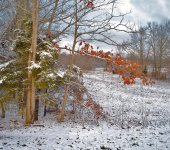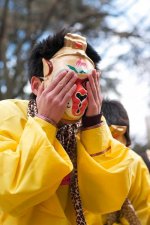I decided to pull the trigger on a demo M8 from Popflash Photo yesterday. I'd like to ask if any of you have used the lenses in my signature with a M8. If so, what are your thoughts?
Congrats. Popflash (Tony) is where I got mine too. A++++ guy. Of the lenses you list, I have the 75/2.5, 28/1.9 and 15/4.5. I'm not sure which 90 you are referring to. The original Elmarit (w/vulcanite band around the base)? I have 3 Leica 90's, but not that one. Mine are the early and late Tele-Elmarits and the pre-ASPH Summicron. All of the aforementioned work splendidly on the M8. Of course their angles of view are cropped 25% because of the sensor size. The in-camera framelines handle all but the 15. For that you'll want to use a 21mm slip-in finder.
I'd also like to know more about the lens coding and the use of IR cut filters. Will the M8 use these lenses without coding? Do any of the lenses listed absolutely require the filter? Any that don't? I've read wide angle lenses are more likely to benefit from use of the filter.
You have some misunderstandings. For color work, indoors or out, and even b&w if you want the tonality to come close to "reality", you'll need an IR filter permanently on each lens. The "it's only needed for black fabrics in some lighting" is just not the case, despite that's Leica's story and they're sticking to it. As to the coding, it's not needed at all from 50mm and longer. Under 50mm you will get some greenish fade toward the corners of the image on account of the IR filters. Increasingly more the shorter the focal length. There are a couple of postprocessing programs (PanoTools and CornerFix) that can correct it, but the in-camera processing works great and saves the added step in post. You need the lens coded for that to operate. There are ways to code the lenses yourself, and in fact for most if not all the lenses you have, that will be your only recourse.
I plan to post process using Lightroom 2.3rc. I'll make my own camera color profile for daylight, flash, and mixed indoor lighting using the Adobe DNG profile editor. Anyone else do this?
I use Dave Farkas' profile that he made using professional lighting equipment, and graciously shared. I got it from him in person but I understand he linked a download on the Leica User Forum.
Lastly (for now) what programs, plug-ins, or techniques do you use to process he color DNG files to black and white?
I'm not really into fancy b&w techniques so I prefer the Q&P (quick and painless) approach: just desaturate. Just about every program has a saturation slider. Again, there are many more qualified people who know advanced techniques for b&w. And although I shoot DNG 99% of the time and believe the M8 jpegs are somewhat more inferior w.r.t. RAW than eg on my Canons (ready to be flamed
😀), I notice it more in color. Frankly I haven't been all that disappointed with monochrome jpegs from the M8. Again, I'm not a b&w "artiste".



